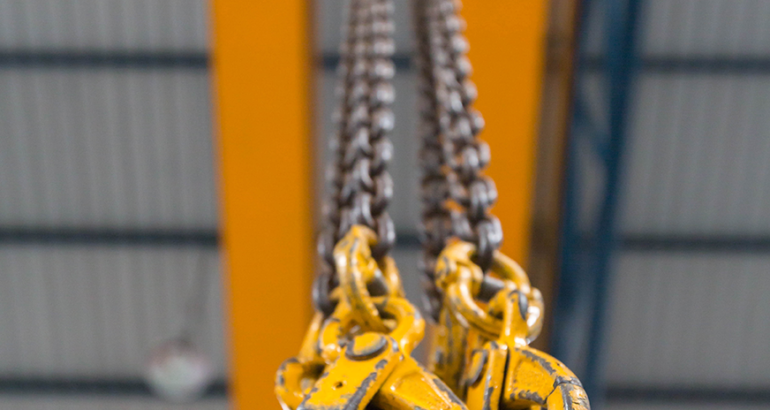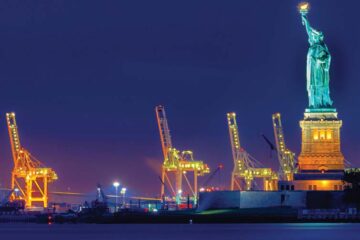Alloy Steel-chain slings differ from wire-rope slings in that components using wire are replaced by link chain. Other sling components are similar. Chain slings are more rugged and flexible, but less shock resistant than wire-rope or braided slings. This size is measured by the link stock.
However, as with ANY wire rope sling, when using a chain link sling in ANY Marine related construction activity…Safety is of the upmost of importance.
For example, when it comes to the chain link “steel alloy material” itself, following are a few characteristics of the alloy worth noting.
Alloy-steel-chain slings shall not be heated above 1,000 degrees F (537 degrees C) after being received from the manufacturer.
When exposed to service temperatures more than 600 degrees F (315 degrees C), one should reduce the working load limits in accordance with the chain manufacturer’s recommendations.
Lastly, extremely low temperatures (less than 0 degrees F) may cause brittle fractures. Under these conditions, sudden loading should be avoided, and the load should be lifted a very short distance while the chains are carefully inspected.
The design factor for steel-chain slings shall be a minimum of 4:1 based upon breaking strength.
Chains should be stored in racks or in designated locations when not in use. Chains should never be stored in damp or dirty places, nor in places exposed to the weather. For long-term storage, they should receive a coating of oil. Should one have any empty chains, the “Ends” should be hooked onto the hoist hook or bull ring.
Chains should not be lubricated when in use because this might make them dangerous to handle. Chains should be cleaned periodically to remove abrasive grit and to facilitate inspection.
The total load that can be lifted safely with steel-chain slings depends on how the slings are attached to the load. If all legs of a steel-chain sling are hooked back into the master link, the safe-load capacity of the whole sling may be increased by 100 percent if the capacity of the master link is not exceeded.
The safe-load level of any chain sling is a function of three basic factors: size and number of legs, condition of chain and other components. Let alone the sling angle between legs and horizontal. One should note the dramatic drop in load capacity when a “Double Chain Link Sling” is positioned in an extremely low hook height and wide leg spreads.
One should keep in mind that hooks, rings, oblong links, pear shaped links, welded or mechanical coupling links and other attachments should always have a rated capacity at least equal to that of the alloy steel chain with which they are used or the sling should NOT be used in excess of the rated capacity of the weakest component.
In ending, upon the return to the shop ANY chain link slings coming off of ANY Project no matter how short the job was, one should always do the following, at a MINIMUM, prior to storing…said Slings.
Inspect for any:
- Illegible sling identification.
- Cracks or breaks.
- Excessive wear, nicks, or gouges.
- Stretched chain links or components.
- Bent, twisted, or deformed chain links or components.
- Evidence of heat damage.
- Excessive pitting or corrosion.
- Lack of ability of chain or components to hinge (articulate) freely.
- Weld splatter.
Other conditions, including visible damage, that cause doubt as to the continued use of the sling.









